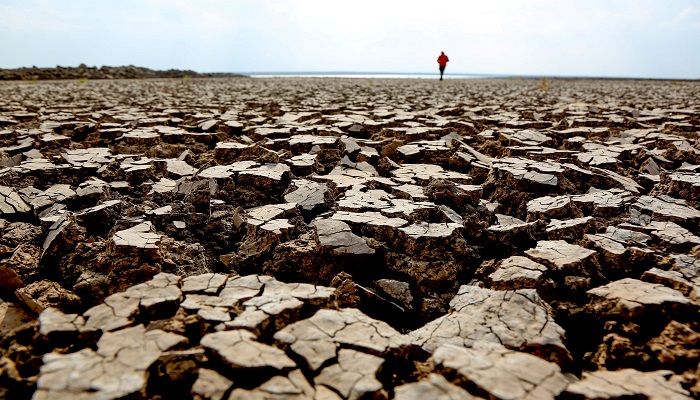In pursuit of climate prosperity
If situation persists, Pakistan's next generation, like other climate-vulnerable countries, will be burdened with debt
July 27, 2024

The conversations with every finance minister were a stark reminder of the urgent climate debt crisis. Sitting in the dimly lit conference rooms in Washington DC, on the outskirts of the World Bank/International Monetary Fund (IMF) spring meetings this April, the atmosphere in the meetings was heavy. For all of the ministers from developing countries, it was the same distressing narrative of how high levels of external sovereign debt and debt service severely hamper their governments' ability to invest in their development goals. The tighter fiscal space amplified by their country's climate vulnerability only worsened their plight, creating a vicious cycle of a climate debt trap with no foreseeable end.
At these meetings, I couldn't help but think about my 10-month-old son, Azlan, and the uncertain times he will face. As I listened to the leaders, it became clear that if things continue as they are, the future of the next generation in climate-vulnerable countries like Pakistan will be a life burdened with debt and a lack of opportunities. In addition to economic stress, the increased and frequent extreme weather events will make these countries continually reliant on international donors, finance institutions, and aid agencies.
The series of climate debt traps in vulnerable countries has left climate-vulnerable countries handcuffed when it comes to development and adapting to climate change; some of them pay more in debt service than they spend on healthcare and education. A recent study by Climate Vulnerable Forum (CVF) reveals that 68 of its climate-vulnerable member countries have lost approximately $525 billion over the last two decades (2000-2019), and many of them are projected to pay a staggering $905 billion in debt services from 2022-2030. Put simply, these climate-vulnerable economies continue to face challenging socio-economic times ahead, along with looming existential threats from climate change. What will it take to end the business-as-usual approach as these climate-vulnerable nations brace for a continued cycle of climatic debt traps? What can be done to reform the international finance architecture that is failing us?
The path to transforming climate-vulnerable nations into climate-prosperous ones hinges on building resilience that will eventually lead to climate prosperity. Governments at all levels must now develop robust, climate-aware internal planning, forge strong partnerships with the private sector, and be ready to use innovative climate finance tools and increase fiscal space. Second, there must be a complete overhaul toward a fair, just, and responsible international finance architecture with concessional lending, innovative financing, and grants.
Climate Prosperity Plans (CPP) offer an actionable roadmap for climate-vulnerable governments as they struggle to mobilise necessary financing to meet their development and climate objectives. These dynamic plans provide a strategic pathway by mobilising resources from the private sector, forming dedicated deal teams, and implementing green industrial policies. These plans pave the way for resilient, low-carbon to net zero development projects.
Several climate-vulnerable countries, including Bangladesh, Ghana, and Sri Lanka, have embraced the CPP and reaped its benefits. Bangladesh leveraged the CPP to present actionable plans and a list of profitable, bankable projects, attracting private sector interest, and used the CPP to access the IMF's Resilience and Sustainable Facility (RSF) for low-interest, long-term loans. A single wind-solar farm project from their CPP attracted a $1.3 billion investment from a Copenhagen investor. Similarly, Sri Lanka used the CPP to secure private sector funding in the agriculture sector and conservation for a 15,000-person farmer cooperative to improve productivity and build resilience through the use of solar water pumps and other greener efficient technologies.
One of the most pressing issues that demands our immediate attention is the need for a fairer international finance architecture. The current system is deeply flawed, diverting crucial funds from the countries that need them most to the wealthiest. A recent G20 Independent Expert Group report highlights the severity of the situation. In 2023, net outflows from emerging and developing countries surged by $68 billion to nearly $200 billion, extracted by private creditors in interest and net repayments. International financial institutions, heralded as experts, spent $40 billion while only $2 billion in net concessional assistance was available despite climate-induced calamities in these climate-vulnerable regions.
We need a complete overhaul of this flawed financial architecture. There needs to be more accountability, fairness, and equity in the mix. The business-as-usual mindset here, too, will only be a cause of amplifying vulnerabilities, increasing risk, and ensuring the continuation of the climate debt trap for vulnerable countries. The solution lies in designing fairer and concessional financial flows that are fit for climate change, account for country-indebtedness, are fast in disbursement, and are directed towards locally led, national, and regional institutions. These international financial institutions should now take on more risk rather than pass on risk to developing countries’ governments through high interest rates and government guarantees.
Azlan, my 10-month-old son, is not responsible for the burdens of climate change and debt. Yet, like millions of children, he will pay the price. We all have a shared responsibility to protect our children's future and our planet; each of us has a role to play. To achieve resilience, we must diligently plan, strategically invest, utilise innovative climate financing, and foster results-driven public-private collaborations. Simultaneously, the global community, specifically the Global North, must reform the outdated international finance architecture to take more risk and deliver in-country programmes and necessary economic transformation to end this climate debt trap for vulnerable countries.
Hamza Haroon is currently Regional Director South Asia for CVF-V20, and a graduate of Harvard Kennedy School of Government.
Disclaimer: The viewpoints expressed in this piece are the writer's own and don't necessarily reflect Geo.tv's editorial policy.











